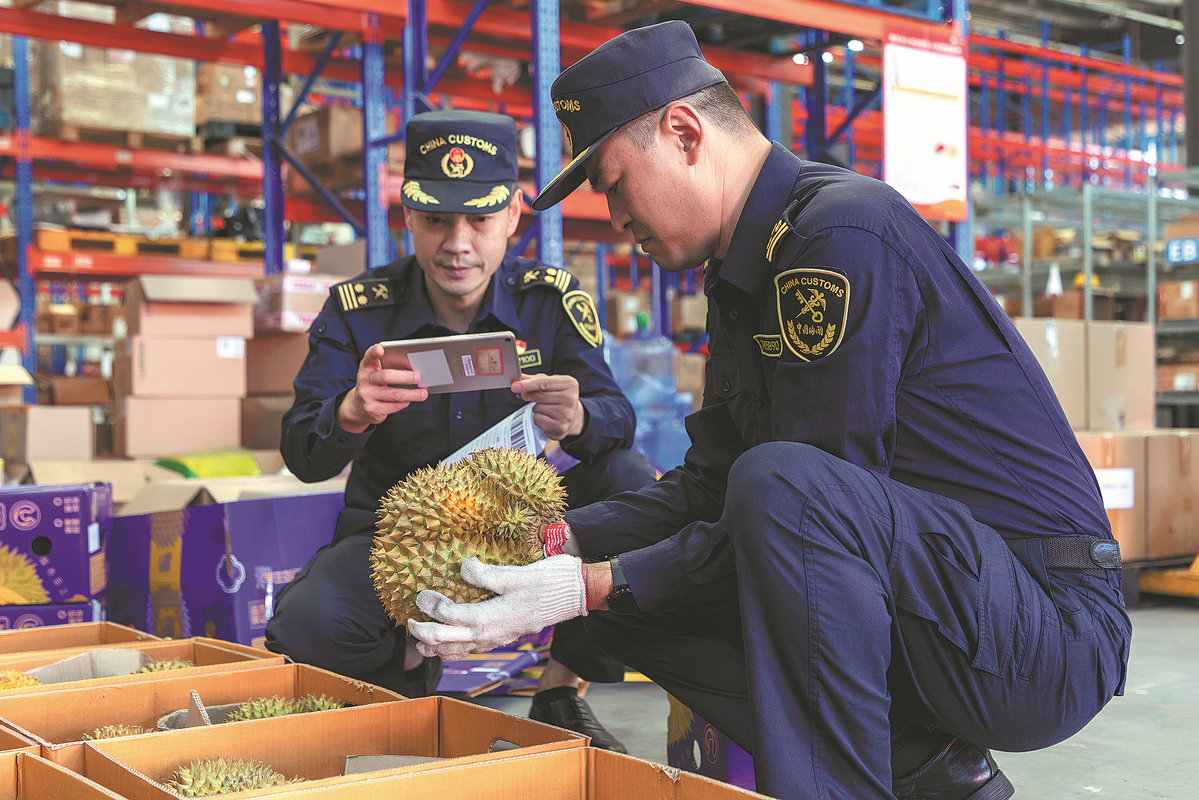Safety-first approach ensures export quality


Thailand's dominance in the durian market is not without risk. Since January, the General Administration of Customs of China has mandated that all durian shipments from exporting countries be accompanied by a laboratory report confirming the absence of Basic Yellow 2, or BY2 — a compound commonly used in dyeing textiles, paper, leather and paint.
The measure was introduced after a Chinese market regulatory agency found traces of BY2 in Thai durian, which had been used to make the fruit more appealing to consumers, raising concerns over food safety. The World Health Organization has classified BY2 as a carcinogen, and China's health authority banned it as an inedible substance in 2008.
"Following the detection of BY2 by Chinese authorities, Thai authorities moved quickly to implement solutions. Efforts include registering additional laboratories, reviewing existing lab facilities, and arranging adequate staff to support export operations," said Ukrit Wongthongsalee, chairman of the Chanthaburi Chamber of Commerce.
Along with the quick response from Thai authorities, Chinese customs implemented special customs clearance procedures for Thai durian exports, instructing relevant border checkpoints to implement special working procedures operating 24 hours a day, seven days a week. These efforts soon restored durian exports to normal and minimized losses for farmers.
"The issue has resulted in some market turbulence, but it is also a good lesson. It reminds Thailand, which aims to be a global fruit exporter, that there's an urgent need to upgrade the fresh fruit industry with full traceability, from orchard to market, to meet high international standards," said Duanrung Benjamas, manager of the Eastern Agricultural and Food Product Research and Innovation Development Center at Rambhai Barni Rajabhat University in Chanthaburi.
She noted that Thailand's advantage lies not only in its fertile land or famous fruit varieties, but also in the way the country responds to changing global expectations. "Quality must be non-negotiable. That means rigorous inspections, full traceability, scientific farming practices, as well as high-standard testing procedures, should be guaranteed," she said.
The food research center has nine advanced testing facilities targeting nutrition elements, mineral substance, and pesticide residue, covering almost all requirements for food, water, and soil.
After the detection of BY2, she said, the Thai government decided to increase investment in both expanding the number of high-quality testing centers as well as improving their facilities.
The move is also supported by local farms. "Soon, our center will have a new testing machine donated by a Chinese durian trader in the province," said Duanrung. She added that the machine — the same latest model used by Chinese customs for fresh fruit testing — will significantly improve efficiency by reducing testing time from hours to just a few minutes.
Zhou Zhaoxi, a researcher from the Chinese Academy of Tropical Agricultural Sciences, said the BY2 case also highlights the importance of customer education. He added that different durian varieties have distinct pulp colors. For Monthong — the dominant Thai durian variety in the Chinese market — the ripe pulp is light yellow, not dark yellow.
"Thailand has about 200 durian species. The Chinese market is attractive, but it needs customer education on the basic knowledge of local species, which will help them avoid being misled," he said.
As China's durian imports continue to grow, other countries such as Indonesia are also eager to access the lucrative market. Thailand is also facing intense competition from Vietnam, China's second-largest durian supplier, as well as Malaysia and Cambodia.
In 2024, Vietnam exported about 1.5 million metric tons of durians, with nearly 180,000 hectares under cultivation, six times more than in 2015, the Vietnam News Agency reported. Export turnover reached a record $3.3 billion, up 43.2 percent from 2023, and accounted for nearly half of the country's total fruit and vegetable export value.
"In a world of rising competitors and shifting consumer tastes, tradition alone will not secure tomorrow's markets. Apart from guaranteeing the premium quality of tropical fruit, Thailand should also boost the industry with innovation," said Ukrit, of the Chanthaburi Chamber of Commerce.
He said a quiet shift has been transforming how people consume durians in recent years. "Frozen pulp and paste are ideal for bakeries, beverages, and desserts that have grown in popularity, thanks to their convenience and longer shelf life. An improved cold chain will serve as a driving force for those forms of fruit products," he said.
Moreover, he said local authorities are increasing budgets on innovation technologies that can further utilize "wasted materials" from the fruits, such as turning their shells into fertilizer or into power supplies via bio-technology.
"Our next goal is to achieve sustainability in the industry. China has great advantages in terms of agricultural technologies. We hope future collaboration on agricultural technology and innovation between China and Thailand can be boosted, even including new marketing trends such as livestreaming," he said.
- Safety-first approach ensures export quality
- Thai durian farmers reap gains from smart solutions
- Flexible programs build diverse talent pool
- Relief efforts underway in flood-hit county
- Summer months transform Tianjin's Qilihai Wetland into an ecological showcase
- Linyi meets RCEP: Connecting regional markets, sharing global goods





































